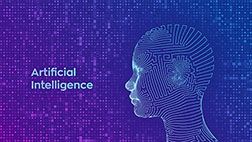
History of Text Technologies | From Tattoos to Computers

Sappho, Socrates, Shakespeare, Rembrandt, Beethoven, Jane Austen, Frederick Douglass, Charlie Chaplin and Billie Holiday are all dead. We remember them because their words and works were preserved for later generations by means of different text technologies. Texts are material artifacts that take many different forms: tattoos, cave paintings, clay tablets, papyrus scrolls, manuscript books, musical scores, maps, printed books, engravings, newspapers, photographs, films, social media, blogs, podcasts, and AI. Every kind of text or media is produced by a special technology, but all those media technologies share a simple purpose: they were designed to supplement the fragile human mind by providing a more durable artificial memory system and to supplement the human voice and hand with a more expansive transmission system. Those technologically preserved and transmitted memories are the foundation of all human culture.
Looking at human cultural achievements in this way overcomes many of the entrenched obstacles of national boundaries, languages, and academic departments. Technologies are not limited to one population or one language: they invade and transform cultures.
HoTT @ FSU
The History of Text Technologies explores the changing material and aesthetic technologies of cultural transmission in scribal, print, visual, and digital forms, as well as ever-evolving audio and visual media archaeologies and ecologies. By taking an expansive view of “text technologies” and their cultural agency, the HoTT concentration opens conventional textual studies and book history to the insights of cross-disciplinary, trans-historical, trans-national empirical and theoretical perspectives.

